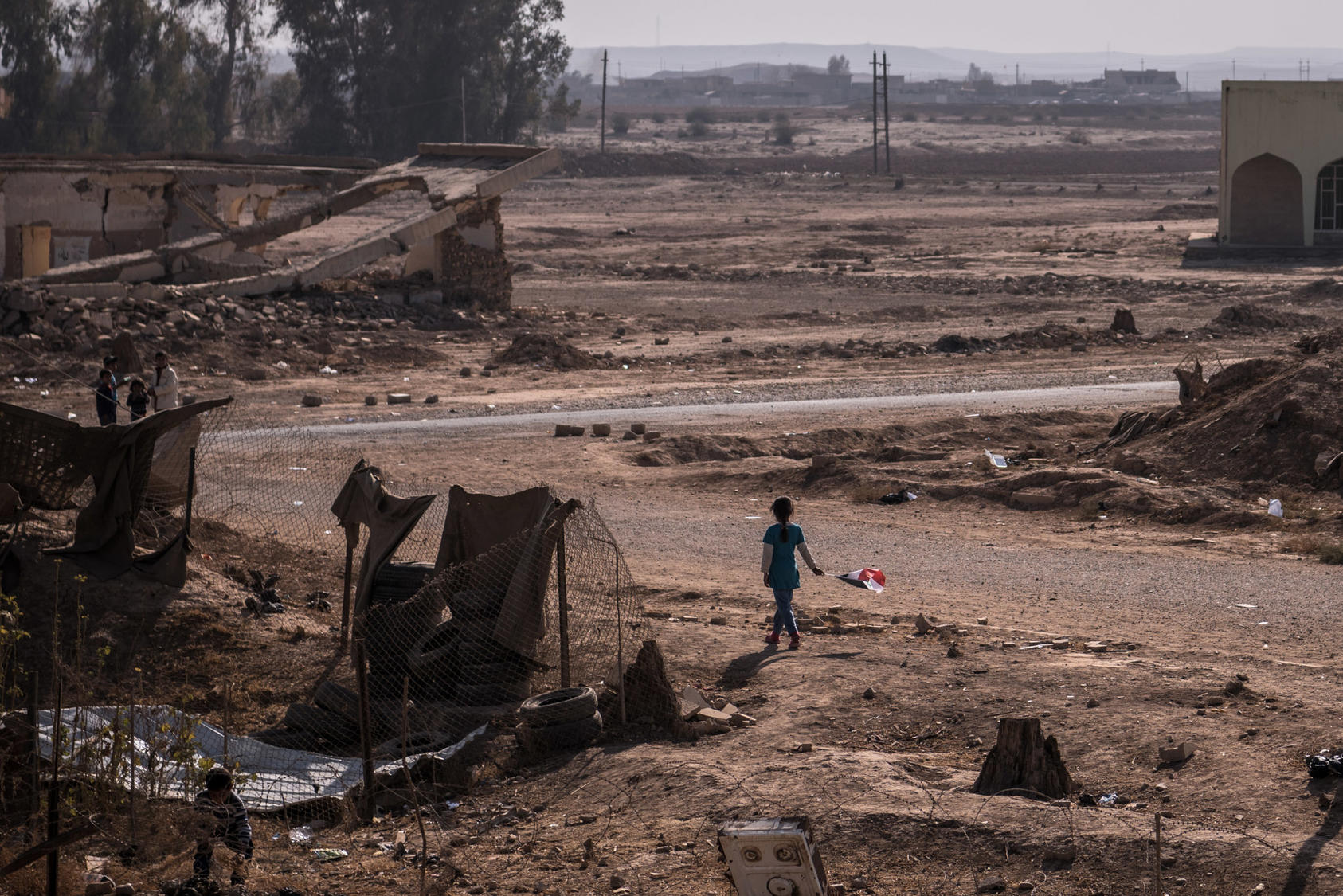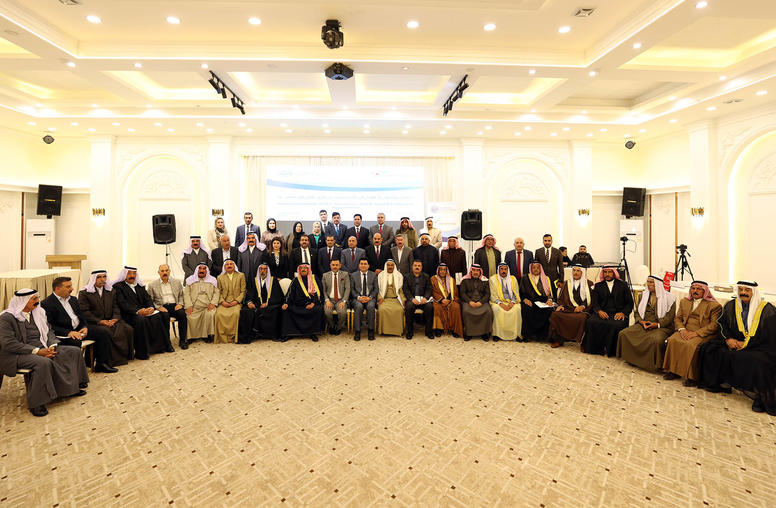From ISIS to Al-Qaida: The Changing Extremist Threat
Terrorist Groups Evolve and Proliferate Faster Than Our Understanding, a New Report Says
The Islamic State may be crumbling across Iraq, but the future prospects of violent extremist groups are far from fading. While ISIS rampaged across Iraq and Syria in 2014, setting up a terror-based regime to impose its will, a revitalized al-Qaida was taking a different, more sustainable approach by grafting itself onto local extremist groups, experts said in a forum at the U.S. Institute of Peace that also examined community approaches to preventing and countering violent extremism. Al-Qaida’s strategy, which has drawn little international attention, will be far more difficult to combat in the long term, panelists said.

Five years after the U.S. raid that killed al-Qaida leader Osama Bin-Laden, the group controls hundreds of miles of Yemen’s coastline, said Daveed Gartenstein-Ross of the Foundation for Defense of Democracies. Al-Qaida is the most powerful insurgent force in Syria after ISIS, holds territory in Libya and helps guide such groups in Mali and Somalia, he said. Charities that supported the group and were put out of business after the September 11, 2001, terrorist attacks in the U.S., are back.
“Al-Qaida operates far more openly than ever before, without anyone being particularly bothered by it,” Gartenstein-Ross said.
Movements, leaders, targets, tactics and arenas of operation have all proliferated in ways unimagined in 2001, said USIP and Wilson Center scholar Robin Wright who, with 19 other analysts from universities and research institutions, produced the “The Jihadi Threat: ISIS, Al Qaeda and Beyond,” a report released at the Dec. 12 event. The menace of violent extremism is now a generational phenomenon that will have to be confronted long into the future, they concluded.
“We have a lot of evidence of what doesn’t work. Particularly, it’s an us-vs-them mentality.” – Amy Pope, U.S. National Security Council
With an eye on the next administration, officials and analysts on a second panel discussed community-based strategies for countering violent extremism that are outlined in two other reports from the Center for Strategic and International Studies and the Prevention Project.
“The Jihadi Threat” report identifies five trends for decades to come, Wright said. In each of three major waves of violence, the number of fighters grew significantly as the survivors became catalysts and recruiters for the next wave. The speed of mobilization was cut in half by the use of social media and easier modes of travel. With each wave, the pool of foreign fighters grew more diverse and recruits became more extreme. Lastly, such campaigns are likely to spread to more locations because extremist violence has become a profession, not just an ideology; even demobilized fighters engage in propaganda and facilitate the struggle.
“Jihadism is here to stay,” said Hassan Hassan, a fellow at the Tahrir Institute for Middle East Policy and author of the book ISIS: Inside the Army of Terror.
ISIS War Chest Dwindles
The self-proclaimed caliphate set up by ISIS, on the other hand, is in dire straits, said William McCants, a senior fellow at the Brookings Institution. ISIS has lost 40 percent of its territory and seen 50,000 fighters killed, according to some intelligence estimates, while its $2 billion war chest dwindles with every attack on oil facilities and a shrinking tax base, resulting in fighters pay being slashed.
Such “shocks to the system” are likely to provoke infighting and defections, McCants said. But the group won’t fade away, even assuming the loss of Mosul, its biggest city, and its capital, Raqqa, he said. Its combatants will head to the desert, and other cells will go underground.
When ISIS’s forerunner, al-Qaida in Iraq, was defeated militarily in 2008, he noted, it staged its comeback as ISIS by assassinating 2,000 Sunni opponents, orchestrating prison breaks that beefed up its ranks and conducting large-scale terror attacks to cement public awareness. Those campaigns can be expected again.
Al-Qaida has been more strategic in building its franchises, and they are now the organization’s focus, said Frederic Wehrey, a fellow at the Carnegie Endowment for International Peace. In fact, the dispersal of leadership to local groups has blurred the lines between central al-Qaida and its branches, he said. Al-Qaida, formerly focused on attacking the “far enemy” of the U.S. and Europe, has shifted to the “near enemy” in its involvement with local groups. ISIS, which for several years sought mostly to consolidate its caliphate, is turning to foreign operations—and will try to step up those attacks as it loses ground in the Middle East.
Al-Qaida has positioned itself as the middle way between ISIS’s brutality and imposition of its rule and the moderation of political Islamists who are perceived by violent extremists as ineffective, Hassan said. Where ISIS advocates a war of attrition with its enemies, al-Qaida pursues the popularization of its ideology.
Two Fronts
Despite the disagreement over tactics, the goals of al-Qaida and ISIS are the same, he said.
“The danger is failing to see them as two fronts that have to be dealt with at the same time,” Hassan said.
The weakening or failure of states in the region have produced a kind of “lab for grotesque experimentation” for violent extremist groups, McCants said. Varying tactics and a range of objectives among local groups have bred a striking diversity of approaches, he said. Relationships among global and local extremists cut in and out based on physical and financial expedience, Wright said.
As hundreds of terrorist groups emerge across the Middle East, the next administration will face difficult, critical questions about whom to fight and how to define its priorities, Wehrey said. “The jihadist agenda will be defined by western action,” he concluded.
Choices also will have to be made about programs to counter violent extremism, the focus of a second panel discussing new reports by the Center for Strategic and International Studies and the Prevention Project. The past few years have seen a second wave of response—following the security measures taken after the 9/11 attacks—that recognizes the root causes of violent extremism and seeks to reduce the appeal of recruitment and vulnerability to radicalization, said Georgia Holmer, who runs USIP’s program for countering violent extremism and moderated the discussion.
The U.S. government needs to increase coordination to bring together military and intelligence perspectives with those seeking to stabilize communities and avert radicalization, said Sarah Sewall, the undersecretary of state for civilian security, democracy and human rights.
“We have built a massive security infrastructure for hundreds of billions of dollars after 9/11 but haven’t balanced it with complementary, softer-side efforts,” Sewall said. “We need to rebalance prevention and response, in resources and policymaking.”
Little Spending on Prevention
Spending on programs to counter violent extremism (CVE) equates to about 0.1 percent of the budgets devoted to military, law enforcement and intelligence efforts, said Shannon Green, a co-author of the CSIS report from its bipartisan Commission on Countering Violent Extremism. The report suggests a $1 billion annual U.S. pledge to domestic and international CVE efforts.
The commission was chaired by former U.K. Prime Minister Tony Blair and former Secretary of Defense and Central Intelligence Director Leon Panetta. Members included USIP President Nancy Lindborg and Chairman of the Board Stephen J. Hadley, a former U.S. national security advisor.
“We need to go big on CVE,” said Amy Pope, the deputy homeland security adviser on the National Security Council. “We are amassing more and more evidence that work in communities is paying off.”
Both reports urge more backing for tailored, local, non-law enforcement programs to detect and prevent radicalization and to rehabilitate those who become attached to extremist ideologies. They also call for respect of human rights on the understanding that widespread violations can spur radicalization.
Community-led initiatives are the key to successful CVE plans, said Eric Rosand, the author and researcher on the Prevention Project report. But persuading citizens to get involved in preventing or countering radicalization in their own communities requires acknowledging and working on their other concerns as well, including jobs, housing and health care.
“The next administration needs to make sure this conversation [about CVE] continues along with counter-terrorism,” Pope said. “We have a lot of evidence of what doesn’t work. Particularly, it’s an us-vs-them mentality.”



